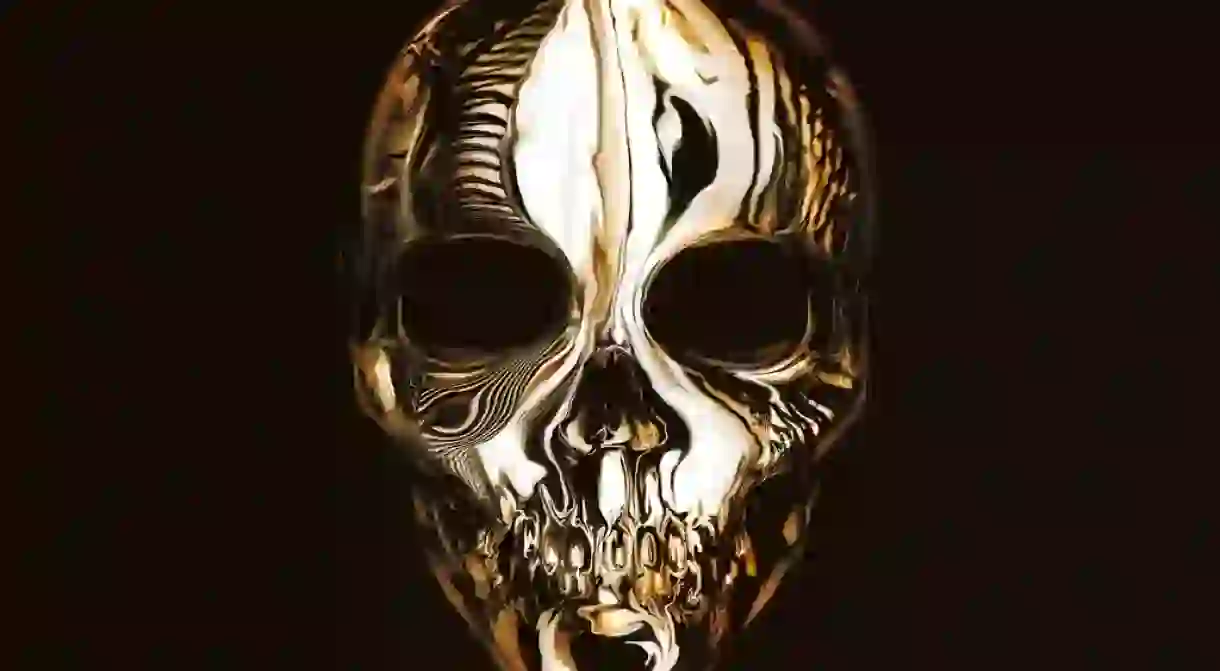Explore the Dark Side of Design With This Subversive New Book

The Book of Black from Laurence King Publishing explores the dark side of design – and it’s just in time for Halloween.

A reinterpreted gothic aesthetic hit its stride in the mid-aughts, and found its niche in U.S. counterculture. Since then, the dark iconography has showed up in everything from graphic design to fashion, popular music, tattoos, and more. It continued to evolve over the years, employing occult symbols in the name of anarchy to shed “light” on the dark and dismal underbelly of society.
But many of us don’t stop to think about how these trends really start. Gothic design took off as radical representation of marginalized society, but its origins are actually rooted in medieval architecture, Italian Baroque design, and mysticism. So why does the gothic aesthetic get so much flack in our current age? Why does it make us so uneasy? And why are we so obsessed with the color black anyway?
Faye Dowling’s The Book of Black enlightens our quiet fascination with the gothic allure and our morbid-obsessed culture. Gothic themes, Dowling shows, are interwoven into our cultural identity, even if they make us feel a little weird or freaked out. We love things that scare us, and we also fear that which we don’t understand.

Excerpt from The Book of Black, by Faye Dowling
Paint it Black
Defined by an armour of black clothes, anarchic symbols and countercultural references, the spirit and aesthetics of the gothic echo through the visual landscape of the twenty-first century. Transcending decades of shifting culture and style, the gothic has been embraced by generations of artists and anarchists, emerging as the defining counterculture dialogue of our times.
Through art, fashion, music and design, the aesthetics and motifs of the gothic have become entwined with the heart of today’s alternative visual culture. Vampires and demons have become beloved screen icons of the modern underworld. The symbols of witchcraft, magic and mysticism decorate our dark, urban uniforms. Skulls, crosses and religious iconography have been redefi ned as symbols of rebellion for our new gothic tribe. Uprooted from their cultural heritage, these sacred signs have been redrawn as a visual ideology for a radical alternative subculture, a shorthand for an allegiance with a modern-day underworld where monsters and misfits rule the world.

By its nature elusive and individualistic, the themes of the gothic have appeared and reappeared through decades of artistic thought and practice, evolving and metamorphosing to reflect the social and cultural consciousness of the time. The lineage of our gothic imagination reveals a complex web of historical influences that draw from medieval architecture and neoclassical sculpture, from the rich romanticism of Italian Baroque painting and the mysticism of nineteenth-century Gothic literature.

Black Hearts
In visual art, the rich and seductive aesthetic of today’s contemporary gothic arts emerged in the 1990s, with a new wave of British artists such as Damien Hirst, Mat Collishaw, Douglas Gordon, Cindy Sherman and Jake & Dinos Chapman. Looking deep into the structures and artifice of society, art and religion, they placed death at the centre of their artistic investigation in works that explored the fears and desires of the human instinct, the romance and horrors of the flesh. Through their eyes, butterflies and bones became existential monuments to decay and mortality. Crucifixes and religious iconography were subverted to question the sanctity and constructs of society. Dismembered dolls and body parts were reassembled in artworks that framed mass culture and capitalism as the new horrors of our world.
These confrontational, dark and poetic artworks were instrumental in forging a new, contemporary gothic language that now captures and defines our alternative visual culture. Anarchic and introspective, seductive and shocking, the gothic has grown to defy the boundaries and genres of our art and society, emerging as a radical dialogue through which we can confront the fundamental truths of our shared human existence, to question the sublime and the beautiful, the grotesque and the absurd.

To purchase the book, click here to visit Amazon.
For more books on art and culture, check out what design in North Korea actually looks like here.













